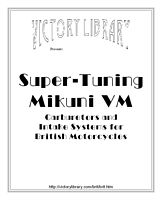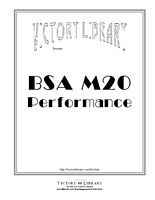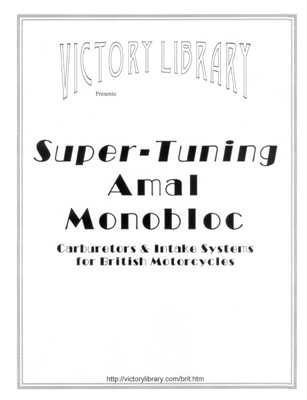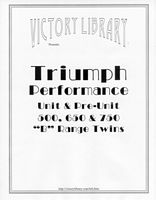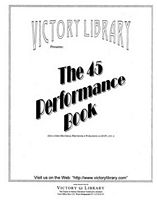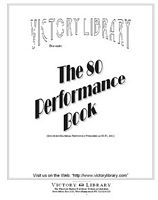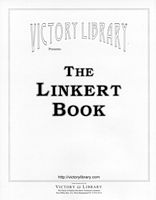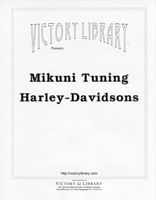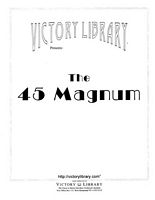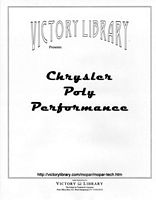Harley Davidson Spark Plug Selection
A few general comments about selecting spark plugs by heat range: |
Spark plugs do not make heat. A “hot” plug cannot make your motor overheat (although it can cause other problems if it is not the correct heat range for your motor). “Heat range” is a rough guide to how hot the plug will remain under the anticipated motor conditions. When those conditions change beyond certain limts, the spark plug's heat range should change as well.
Spark plugs are heated by the burning fuel in the motor, and coated with the fuel's combustion products: soot, oil, etc. These deposits are “cooked off” (like a self-cleaning oven) by this heat if the plug's temperature stays at or near 750°F. The more work the motor does, the higher the plug temperature becomes - requiring a cooler plug. If the temperature falls too far below this temperature, the deposits will foul the plug (remain on the tip, and cause a short circuit between the electrode and ground strap so the plug does not fire). If the temperature goes too high, the plug will “glow”, and ignite the fuel before the timed electric spark from the distributor, breaker or magneto reaches it, causing pre-ignition, knocking and other damage.
“Heat range” means how much heat the plug retains (or how quickly it cools). Plugs lose most of their heat by thread contact with the motor (the rest is by contact with un-burned fuel in the intake mixture). The construction method “stabilizes” the porcelain's temperature at a certain level to prevent fouling or pre-ignition. A “hot” plug has a very long internal conductive path between the porcelain body and the threads, so when the porcelain is heated by a burst of full throttle it stays relatively hot; a “cooler” plug has a shorter path, and loses heat more rapidly, so its temperature remains closer to the 750°F “ideal” target. If the motor is operated at very low throttle opening, the “cooler” plug loses too much heat, and its temperature falls below the ideal range, and it may foul. The heat range generally can't be detected by the physical appearance of the plug (except for the number, of course). |
There is no “correct” spark plug for a specific motor or vehicle, all choices are compromises based on many factors, including:
» Compression ratio (higher compression = colder plug)
» Gearing (taller, smaller number = colder plug)
» Chassis weight (heavier = colder plug)
» Wind resistance (less aerodynamic = colder plug)
» Quality of ring seal (poor = warmer plug)
» Power developed (higher = colder plug)
» Fuel mixture (leaner = colder plug)
» Altitude (higher = warmer plug)
» Throttle use (more = colder plug)
» Cruising speed (higher = colder plug)
» Air temperature (higher = colder plug)
Many older Harley-Davidson side-valve and knucklehead motors using 18mm spark plugs will run best with colder spark plugs (#4) for any performance use, including sustained high-speed cruising, and standard #3 spark plugs for around town.
Motors experiencing oil control problems can use a hotter spark plug in the affected cylinder only, if desired: #2 in the “wet” cylinder, #3 in the normal cylinder, etc.
New motors should be broken in with #3 spark plugs. After the initial period of light throttle and moderate speed, more suitable (generally colder) plugs should be installed before severe use or high cruising speed is attempted.
High-compression & high performance motors such as WLD, WLDR & WR, and Servi-Cars & side-cars should use #4 spark plugs for street use whenever possible.
Side-valve motors operated at high speeds sometimes feel “best” with a #4 in the front (which naturally runs warm) and a #3 (which gets more oil) in the rear.
WLDR & WR racers should use #3 plugs for warm-up and spark adjustment, then switch to #5 immediately before the race while the motor is still warm.
U.S.-manufactured plugs (Champion, Autolite, AC) have higher part numbers for higher heat ranges: J12 is hotter than J10, &c. European and oriental plugs (NGK, Bosch, ND, Lodge, KLG) have lower part numbers for higher heat ranges: B6 is hotter than B7, &c. |
Harley-Davidson 18mm Spark Plugs by Part Nº |
H-D Nº |
Modern Part Nº | Old Part Nº | Purpose |
#2 | 32304-09 | 37-09B | Oil burning, very low compression |
#3 | 32302-09 | 37-09C | Break-in, normal traffic use |
#4 | 32300-09 | 37-09D | High compression, high performance, high speed cruising |
#5 | 32306-09 | 37-09E | Racing |
|



